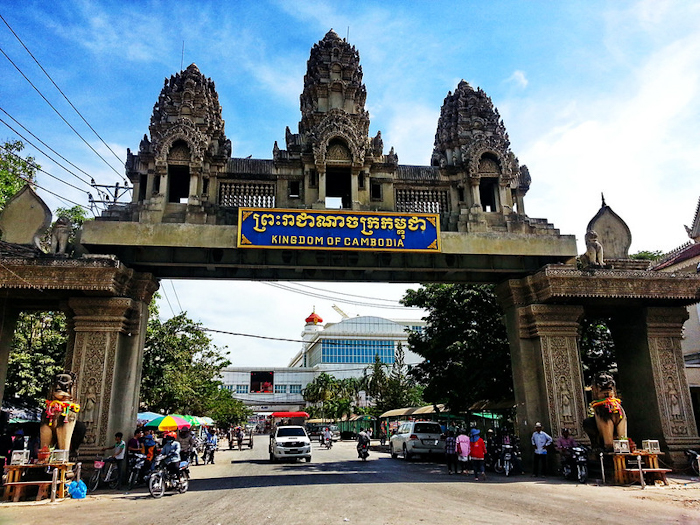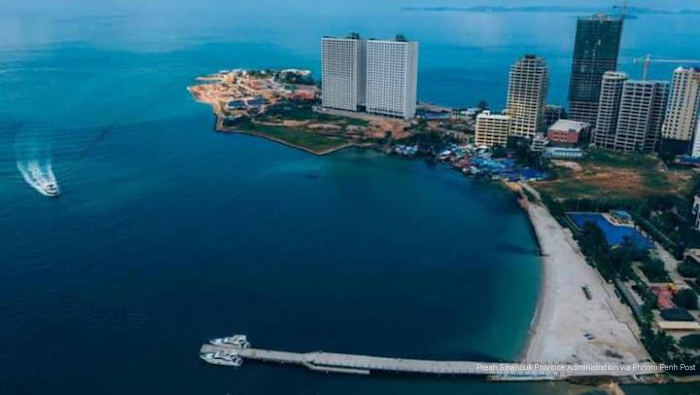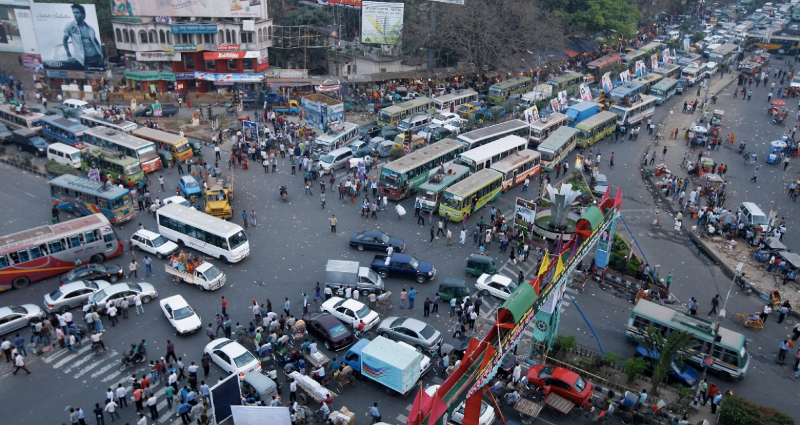Trade and Investment Facilitation
Countries of the Greater Mekong Subregion are working to make the movement of goods and services across borders faster, easier, cheaper, more compliant, and more inclusive.
Over the past decade, the Greater Mekong Subregion’s (GMS) road network has expanded by almost 200,000 kilometers, and overland road freight has almost doubled. Yet despite these advances, remaining barriers to trade and transport continue to inhibit the subregion’s full economic potential and the cost of cross-border land transport remains high.
With much of the hard infrastructure in place, there has been a greater focus in recent years on the rules, regulations, agreements, and other “software” to make the movement of goods and services across borders in the GMS faster, easier, cheaper, more compliant, and more inclusive.
The GMS Economic Cooperation Program Strategic Framework 2030 (GMS-2030) focus on trade facilitation will modernize customs and establish sanitary and phytosanitary regulations. It will also strengthen links to the private sector. GMS-2030 will support the development of e-commerce platforms in the subregion. By facilitating investment, the strategy will ease or eliminate investment flow constraints and create an integrated investment market. GMS-2030 was endorsed and adopted at the 7th GMS Summit of Leaders in September 2021. It aims to provide a new setting for the development of this subregion for the next decade.
The GMS Transport and Trade Facilitation Action Program is working to overcome existing barriers in order to link the subregion to the ASEAN Economic Community’s single market and production base, as well as other regional cooperation initiatives.
The program is helping to expand transport and traffic rights along the GMS Cross Border Transport Facilitation Agreement (CBTA). route network; simplify and modernize customs procedures and border management; and strengthen the capacity of sanitary and phytosanitary agencies in the subregion.
To facilitate progressive implementation of the CBTA, the GMS Transport Ministers as members of the CBTA Joint Committee agreed to an “Early Harvest” memorandum of understanding to allow the issuance and mutual recognition of GMS Road Transport Permits along the CBTA Protocol 1 route network and the border crossing points along these routes starting August 2018. This initiative was suspended with the closure of international borders during the Covid-19 health pandemic, but reinstated by the Ministers for a further three-year period at the Eighth CBTA Joint Committee meeting in December 2023.
Related
• ‘Early Harvest’ Implementation of the Cross-Border Transport Facilitation Agreement
• Joint Committee for the CBTA
• Statement of the Seventh Meeting of the Joint Committee for the CBTA (13 March 2019)
Focal Persons at the Asian Development Bank
-
Mohammad Nazrul Islam
Transport Sector Office
Sectors Group -
Antonio Ressano
Regional Cooperation and Integration Unit
Southeast Asia Department -
Lucia Martin Casanueva
Regional Cooperation and Integration Unit
Southeast Asia Department/GMS Secretariat -
Yuya Yamamoto
Regional Cooperation and Integration and Trade Divisiont
Climate Change and Sustainable Development Department -
Antonio Ressano
Regional Cooperation and Integration Unit
Southeast Asia Department -
Maria Mendez Martinez
Regional Cooperation and Integration Unit
Southeast Asia Department/GMS Secretariat
Cross-border Transport Facilitation Agreement (CBTA);
Other Concerned Staff & Consultants
Investment;
Other Concerned Staff & Consultants
Send inquiries to GMS Secretariat.
Luang Prabang Station along Lao PDR-People's Republic of China Railway Nears Completion
The Luang Prabang Station along the Lao PDR-People's Republic of China (PRC) railway is set to be completed in August, notes the China Radio International Vientiane. It will have two platforms, four tracks, and a station hall that can accommodate 1,200 passengers. The station’s roof incorporates a distinctive “three vertical lines, one diagonal” design in the steel structure.
Sihanoukville Province to become a Multi-purpose SEZ
Cambodia Prime Minister Hun Sen signed a sub-decree to upgrade the Preah Sihanouk province (“Sihanoukville”) to a multi-purpose special economic zone (SEZ) on 9 June. This decision aims to increase its economic potential to investors.

Chu Lai Port serves the needs of import and export goods for businesses in Viet Nam's Central region. Photo by THACO, THILOGI's logistics company.
Chu Lai Port in Viet Nam as New Export Gateway
Chu Lai Port aims to become a major international freight forwarding hub for import and export of goods in Viet Nam’s central and Central Highlands regions. The Trường Hải International Logistics Limited Liability Company, operator of Chu Lai Port, has expanded the port's scale and upgraded its entire service chain to achieve this target. The port has linkages to coastal roads, highways, and large industrial clusters and offers accessibility to the East-West economic corridor.

Vientiane toll station photo by _khamla_phimmasone_US$. This file comes from Mapillary.com, a service for sharing geotagged photos. All photos are under a CC BY-SA 4.0.
Lao PDR-PRC Expressway to Improve Connectivity and Boost Investment
The planned Lao People’s Democratic Republic (PDR)-People’s Republic of China (PRC) expressway aims to improve the transport of goods and people, promote production, and boost commerce, investment, tourism and services, in line with the Government of Lao PDR's objectives. It spans 440 kilometers and comprises four sections in total. Section 1 running between Vientiane and Vangvieng, is already in use.

On the road from Ho Chi Minh, Viet Nam to Phnom Penh, Cambodia. Photo by Clay Gilliland/ Flickr (CC BY-SA 2.0)
Upgrade for Highway Linking Cambodia and Viet Nam Proposed
A $97.9 million upgrade for Viet Nam’s National Highway 62 has been proposed to Viet Nam's Ministry of Transport. The renovation work will include road repairs and road widening of specific portions from nine to eleven meters to reduce the travel time from Ho Chi Minh City, Viet Nam, to Cambodia. The project is proposed to start in 2021 with scheduled completion by 2023.
The highway connects Vietnam’s highways No.1, N2 and the HCMC-Trung Luong-My Thuan Expressway. All three are major routes run from HCMC on through the Mekong Delta.

The border between Aranyaprathet, Sa Kaeo, Thailand and Poipet, Cambodia. Photo by Thanate Tan via Flickr (CC BY 2.0).
New Highway Linking Thailand to Cambodia On Track for Completion
Thailand's Department of Highways noted that construction of the new Highway 3646 linking Thailand and Cambodia is already 70% complete. Full completion is expected by next February. Highway 3646 will connect Ban Nong Ian in Sa Kaeo, Aranyaprathet, Thailand, to Banteay Meanchey, Cambodia, via the Thailand-Cambodia Friendship Bridge.
The post-pandemic era can be a new era for Asia's roads, too.
Roads in Asia and the Pacific have brought us essential supplies and services, frontline workers, food and now vaccines. It is time to revive these vital arteries to prepare for economic recovery.
Cambodian Mango Traders Receive Customs Approval to Export Directly to PRC
The People’s Republic of China (PRC) has allowed Cambodia to export fresh mangoes directly to its market after the PRC’s General Administration of Customs (GACC) certified 37 mango plantations and five packaging factories as compliant with phytosanitary and packaging standards on 26 April. GACC experts from the Guangxi Zhuang Autonomous Region held a virtual inspection of mango plantations and steam treatments plants on 10 March.

Durian being sold in Bangkok, Thailand. Photo by Sitoo via Flickr (CC BY-NC-ND 2.0)
PRC Opens Dongxing Border Gate for Thailand’s Fruits
The General Administration of Customs of the PRC (GACC) has opened the Dongxing border gate in the Guangxi Zhuang Autonomous Region to facilitate fruit imports from Thailand on 29 April 2021. Thailand’s Department of Agriculture expects this to lead to a significant rise in the export of durian to the PRC.
- ‹ previous
- 5 of 18
- next ›




